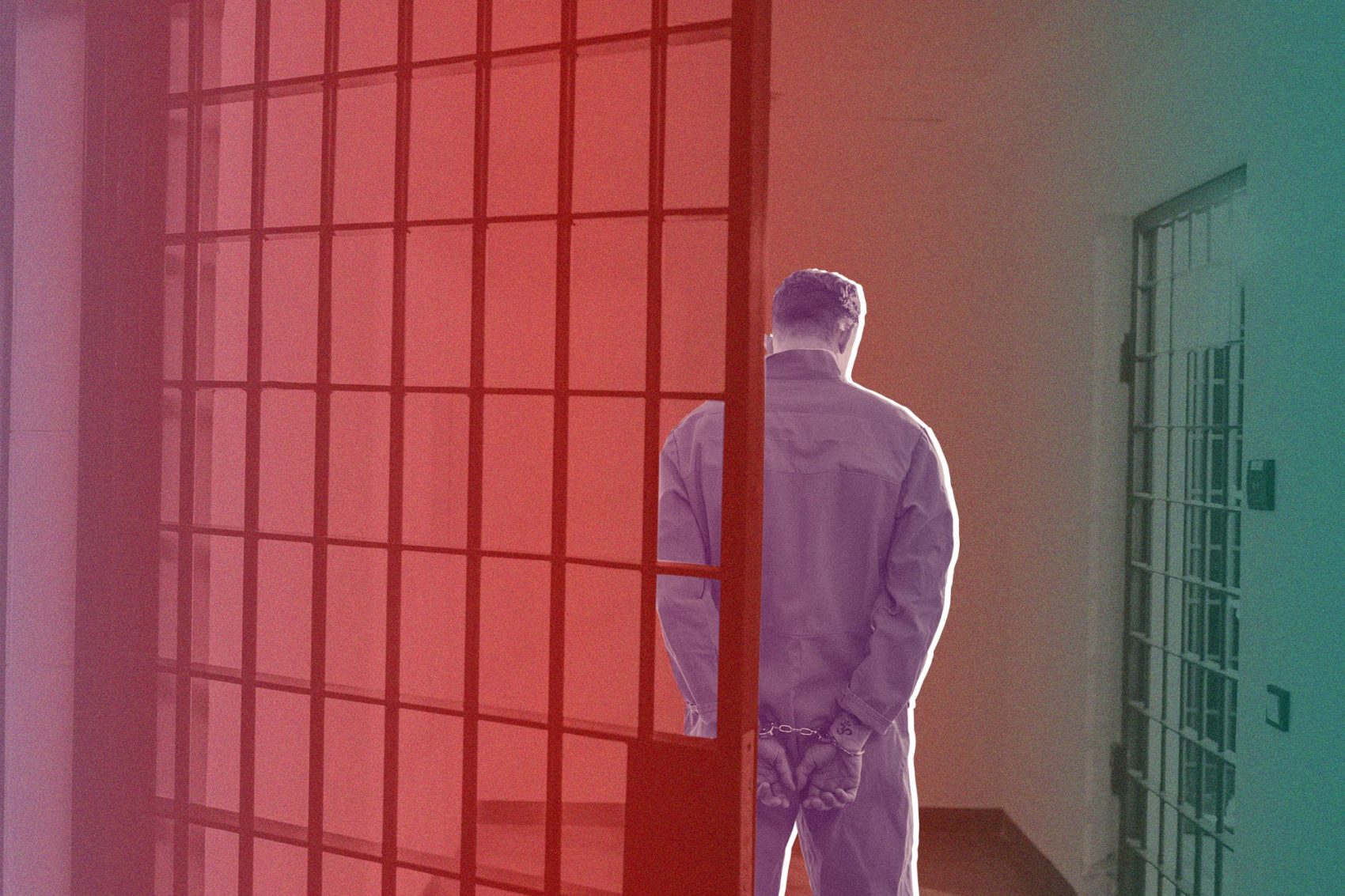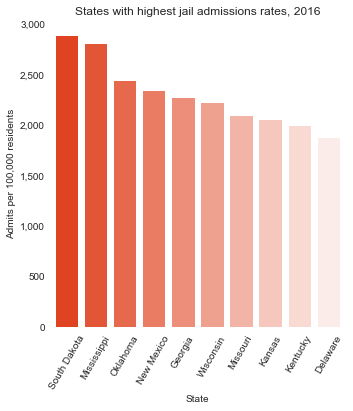South Dakota Leads Nation on Jail Admissions, New Report Finds
Nearly half of all arrests in the state are drug or alcohol related, compared to just 29 percent nationally.

South Dakota, one of the least populated states in the country, jails the most people per capita, according to a new report from Prison Policy Initiative. The state jailed roughly 25,000 people in 2016, nearly 3 percent of the state’s population and almost twice the national average. That’s despite the fact that its crime rate is below the national average.
The new data builds on a report released by the group last month, which found that 4.9 million people cycle through jail nationally each year. More than a quarter were arrested multiple times, with Black arrestees jailed repeatedly at three times the rate of their white counterparts.
The report highlights the impact of incarceration. “Even short stints in jail can throw an individual’s life into disarray by forcing them to miss work, isolating them from loved ones, and cutting off any medications they are taking,” it states.
People in South Dakota are disproportionately arrested for drug offenses and nonviolent crimes. Nearly half of all arrests in South Dakota are drug or alcohol related, compared to just 29 percent nationally. And 85 percent of all arrests in the state are for nonviolent offenses, slightly above the national average. Advocates say the data suggests South Dakota is using the criminal legal system to address issues like substance use and poverty, which they say would be better dealt with in other ways.
“We can’t incarcerate our way out of addiction,” Libby Skarin, policy director for the ACLU of South Dakota, told the Appeal by email. Skarin said the charge “unauthorized ingestion of controlled drug or substance,” which allows police to arrest people who have taken illegal drugs, even if they no longer possess them, should be reclassified as a misdemeanor, and that the state should invest more in diversion and treatment programs for substance use disorders.

In South Dakota, the people who are arrested and admitted to jail are disproportionately Native. Although Natives make up 8.7 percent of South Dakota’s population, they are roughly half of those booked into jails in the state. Racial disparities in incarceration rates exist nationwide—Black people are jailed at more than four times the rate of white people—but disparities in South Dakota are far greater: According to data from the Vera Institute of Justice, Natives between the ages of 15 and 64 are incarcerated at 10 times the rate of white people in South Dakota.
“The legacy of systemic racism in this country means that nonwhite people struggle with poverty at much higher rates,” said Wanda Bertram, co-author of the new PPI report. “So when counties use police and jails to warehouse impoverished people—which our demographic analysis of people in jails shows they often do—people of color are going to be disproportionately harmed.”
This disparity is particularly acute for drug- and alcohol-related offenses, where Native Americans account for the majority of all arrests in the state. For instance, out of nearly 7,000 arrests for public intoxication reported to the FBI’s national database, all but 56 involved Natives. Though South Dakota’s Native reservations experience alcohol use disorder rates well above the national average, the federal Bureau of Indian Affairs has cut funding for substance use treatment and other health services in recent years.
Olowan Martinez, a grassroots organizer on the Oglala Lakota Pine Ridge Indian Reservation, says that without adequate treatment services, families are left to grapple with their loved ones’ substance use. “We’re on our own here. It’s left up to the families to solve this problem,” she said. “The arrests, I don’t see how they could be helping. They just break up families.”
Despite the state’s high incarceration rates, some jurisdictions in South Dakota are working to reduce jail populations. In Pennington County, which won a grant from the MacArthur Foundation’s Safety and Justice Challenge, jail admissions have fallen by 5 percent since last year, in part because of last year’s opening of the Care Campus, an alternative to incarceration that provides substance use treatment to people convicted of low-level offenses.
In Prison Policy Initiative’s August report, the group recommends reclassifying certain misdemeanors as non-jailable infractions and providing services before people come into contact with the legal system, as well as diverting people from jail if they are arrested. It also recommends expanding social services, community-based mental health care, and substance use treatments, as well as adopting a “housing first” model to address homelessness.
“One of the most common ways our criminal justice system criminalizes poverty is by jailing people who lacked equal access to healthcare, housing, and a living wage,” Bertram said. “It’s not just counterproductive to punish poverty with jail; it’s simply wrong.”
